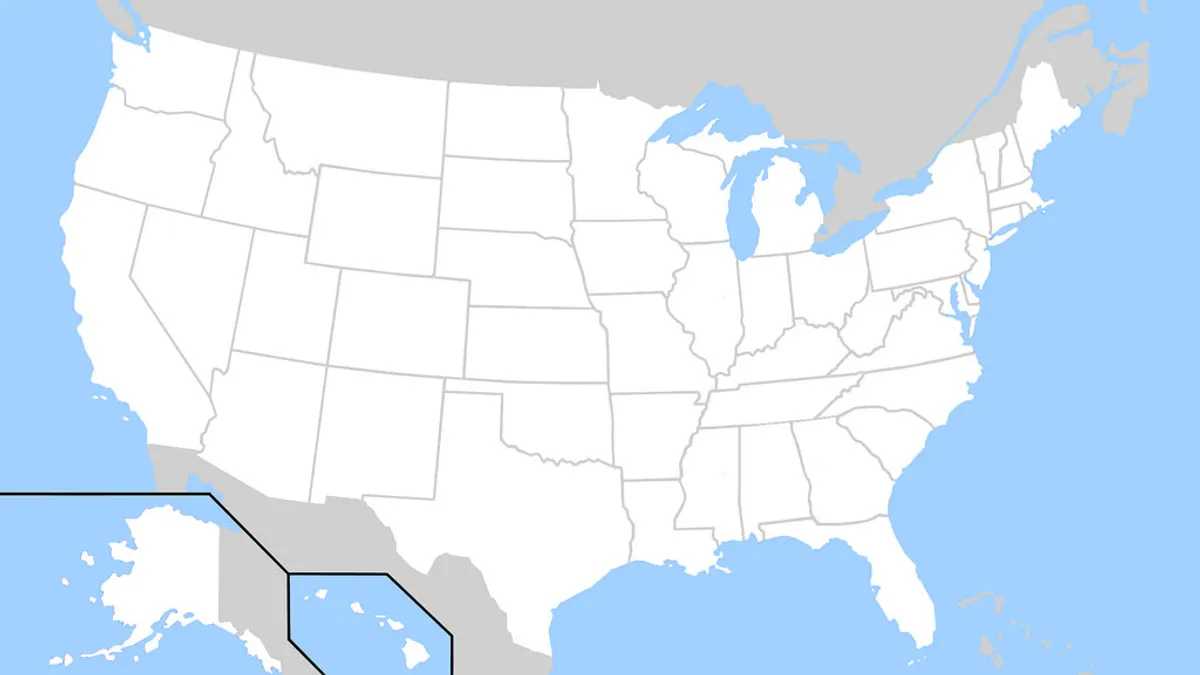Months after the approval process for all states' consolidated Every Student Succeeds Act (ESSA) accountability plans wrapped up in September 2018, each state has identified its own set of indicators and has been working to implement the federal law. However, as this shift takes place, there's still an underlying question: How well do these plans aim to support struggling schools and ensure equity?
On Wednesday, the National Urban League (NUL) released its ESSA equity review grading the plans of 36 states and the District of Columbia along 12 indicators. Using metrics including resource equity, educator equity, and supports and interventions for struggling schools, the organization assigned a rating of "excellent," "sufficient" or "poor," with these evaluations serving as a "preliminary indicator" of how states plan to implement the policy, the report says.
"The genesis of this report was really to elevate equity in this conversation knowing that these plans represent a blueprint for action," Susie Feliz, the vice president for policy and legislative affairs in the NUL Washington Bureau, told Education Dive. "They represent promises that state leaders intend to make to ensure that every student does, in fact, succeed."
The grades
Since the passage of the Every Student Succeeds Act in 2015, states have been charged with revamping each of their strategic plans to evaluate student performance. Instead of one-size-fits-all standardized tests and uniform accountability measures, the move from No Child Left Behind to ESSA made room for more flexibility for states and a heavier emphasis on individual student progress.
ESSA also aimed to tackle the achievement gap and address inequities that exist between and within states. Since its implementation, some states have made efforts to increase equity through initiatives including implicit bias training, issuing annual equity reports and hiring "equity specialists" to work with teachers.
In assessing these efforts, the NUL's report card deemed nine states "excellent" in incorporating equity, while 20 were graded "sufficient" and eight were rated "poor."
Colorado, Illinois, Kentucky, Louisiana, New Jersey, New York, Ohio, Oklahoma and Rhode Island got "excellent" ratings, meaning their ESSA plans "were off to a strong start making the most of opportunities to further advance equity, with some areas for improvement," the report says.
The bulk of states surveyed in the report — 20 in total — got a "sufficient" grade, which the NUL report defines as plans being "adequately attentive to opportunities to further advance equity, with several missed opportunities, and a few areas deserving urgent attention." Among these states is Washington, Texas, Massachusetts, Pennsylvania, Tennessee, North Carolina and Maryland. The District of Columbia also falls in the "sufficient" category.
Roughly 22% of the states, or eight in total, evaluated in the NUL report were deemed "poor" — that is, their plans "missed opportunities to further advance equity in a majority of areas with several areas needing urgent attention." Several high-population states — including California, Florida, Georgia, Virginia and Arizona — landed in this category, along with Kansas, Missouri and Michigan.
The indicators
In assigning grades, the NUL used 12 metrics that span a wide variety of issues in educational equity, including breaking the school-to-prison pipeline, resource equity, educator equity, and supports and interventions for struggling schools. Each state, plus D.C., was rated "excellent," "sufficient" or "poor" in each of these indicators, which helped calculate its overall score.
In many cases, regardless of what overall grade a state earned, there were clear trends in performance in each area. NUL rated the majority of states as excellent in the goals and indicators category — defined by the organization as "having ambitious academic goals for all students and for each student subgroup" — as well as stakeholder engagement, equitable access to early-childhood learning, equitable access to high-quality curricula, and equitable implementation of college and career standards.
Additionally, in two-thirds of the categories, such as resource equity, educator equity, breaking the school-to-prison pipeline and out-of-school time learning, states were most often graded as "sufficient." The top three "poor" categories were supports and interventions for struggling schools, resource equity and subgroup performance, which measures how much state ESSA plans include all student subgroups across all grades.
Feliz said her organization is "optimistic" about the results.
Moving forward
As part of its recommendations, the NUL urged Congress to revisit state plans and hold hearings on the issues highlighted as a means of paving the way for improvement. It also suggests that at a state level, leaders take notes from their peers, and from a budgetary standpoint, reevaluate spending to ensure it is distributed equitably – which a report issued in April says is not taking place.
Another key takeaway, Feliz said, is for communities to discuss and advocate for their states to make any needed changes to strengthen their school systems.
"ESSA represents a historic opportunity to meaningfully engage local communities, families and parents that are directly impacted by the law, but also by states' interpretations of the law and the policies and practices they put in place," Feliz said. "There's a real opportunity for administrators and principals to have meaningful conversations and involve community stakeholders ... and solicit their input on these ESSA plans."






 Dive Awards
Dive Awards















